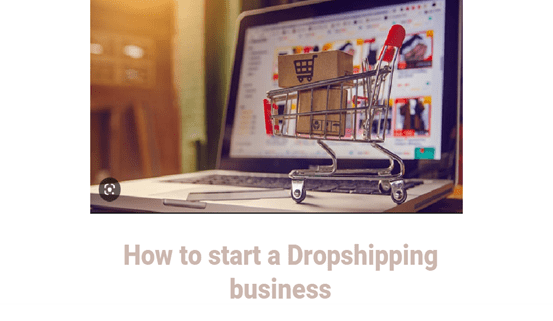How To Start a Personal Shopper Business – 15+ Steps

Hey there,
If you were wondering,
How to start a Personal Shopper Business?
You are in the right place.
Starting a personal shopper business can be a rewarding and fulfilling career choice. With the right skills, strategy, and mindset, you can turn your love of fashion and styling into a successful business. Whether you’re an experienced stylist or just starting, this guide will help you begin your journey to becoming a successful personal shopper.
What Is a Personal Shopper Business?
What Is a Personal Shopper Business? A personal shopper business is a service where a professional stylist helps individuals select clothing and accessories to suit their style, body shape, and budget.
Personal shoppers work with clients to create a functional and fashionable wardrobe. They can help with everything from creating a new wardrobe, to updating an existing one, to finding the perfect outfit for a special occasion.
They are also adept at helping people who may have lost interest in fashion or have difficulty shopping independently. Personal shoppers usually work one-on-one with clients in-store or online and can also provide virtual styling services.
Some personal shoppers also offer styling services for photoshoots, events, and fashion shows. It’s an exciting career for those passionate about fashion, styling, and helping others look their best. It’s a great way to turn your love for fashion into a successful business.
Personal Shopper Business Made Easy: a Step-by-step Guide
Ready to start your own personal shopper business? This step-by-step guide breaks down everything you need to know to make it happen. From building your portfolio to finding clients, we’ve got you covered. Let’s get started.
1 – Develop Styling Skills
Developing styling skills is essential to become a successful personal shopper. Styling combines clothing, accessories, and makeup into one complete look that suits your client’s style and personality.
It also requires an understanding of the latest trends in fashion and an eye for detail to create unique looks for each client. To develop these skills, it is essential to research current trends, practice with friends or family members and get feedback from those who have experience in this field.
There are several ways to develop your styling skills:
Take courses: Look for fashion styling classes or workshops that can provide you with the knowledge and skills you need to be a successful personal shopper.
Read fashion blogs and books: Stay informed about the latest fashion trends, styling techniques, and industry news.
Practice styling on friends and family: You can start practicing your styling skills on friends and family members. It will allow you to try different styles and techniques and get feedback on your work.
Shadowing an experienced personal shopper will allow you to see firsthand how a professional stylist works and learn from them.
Diversify your skills: Personal styling is not only about clothing; it also includes hair, makeup, and accessories. Try to diversify your skillset to offer a complete styling service.
Keep learning: The fashion industry is constantly evolving, so it’s essential to continue learning and updating your skills throughout your career.
By developing your styling skills, you will be able to provide high-quality services to your clients, which will set you apart from the competition and help you build a successful personal shopper business.
2 – Build a Portfolio
Once you have the qualifications, experience, and knowledge to become a personal shopper, it’s time to start building your portfolio. A portfolio is an invaluable asset for any personal shopper as it showcases your past work and helps potential clients understand what services you can offer them. Creating an impressive portfolio requires effort and dedication, but will be worth it in the long run.
To create a successful portfolio, list your relevant skills and experiences. Include details such as which stores or brands you’ve worked with in the past, any certifications or awards that demonstrate your expertise in the field, and notable achievements from previous projects.
Additionally, don’t forget to include testimonials from satisfied customers that show how skilled you are at helping people find exactly what they need. Finally, have photos of some of your best looks so prospective clients can get an idea of what style advice you give!
Here are a few tips to help you build a strong portfolio:
Include a variety of looks: Your portfolio should include a range of styles, from classic to trendy, to show your versatility as a stylist.
Use high-quality images: Use professional-quality photographs or videography to showcase your work.
Include client testimonials: Including client testimonials in your portfolio will help potential clients understand the value of your services.
Keep it up-to-date: Regularly update your portfolio with new work to show your clients that you are current and active in the industry.
Make it accessible: Make sure your portfolio is easy to view online, and consider creating a print version that you can take with you to meetings with potential clients.
Show your process: A good portfolio will also show the styling process, from consultation to the outcome.
A portfolio showcasing your skills and style will help you attract potential clients and build a successful personal shopper business.
3 – Identify Your Target Market
Identifying your target market is crucial when starting a personal shopping business. You should know precisely who you are targeting so that you can tailor your services and marketing accordingly. Your target customers could be busy professionals, working mothers, college students, or anyone needing help shopping.
Here are a few tips to help you identify your target market:
Define your ideal client: Consider factors such as age, gender, income, lifestyle, and personal style when defining your ideal client.
Research your competition: Look at what other personal shoppers in your area are offering and identify any gaps in the market that you can fill.
Consider your strengths: Consider what sets you apart as a stylist and what types of clients would benefit from your unique skills and perspective.
Look for niches: You can target specific niches, such as plus size styling or styling for men or particular occasions.
Understand your client’s needs: Understand what your target market is looking for in a personal shopper, and tailor your services to meet those needs.
By identifying your target market, you will be able to create a more effective marketing strategy and offer services tailored to your client’s specific needs. This will help you attract the right clients and grow your personal shopper business.
4 – Create a Business Plan
Any successful business starts with a well-developed business plan. A personal shopper business is no exception. Your goal should include a detailed marketing strategy and financial projections based on your target market, services offered, and estimated expenses. Please make sure you are realistic about the amount of time it will take for your business to become profitable.
Here are a few tips to help you create a business plan:
Define your business: Clearly outline your services and your target market.
Develop a marketing strategy: Identify how you will reach and attract potential clients.
Set financial goals: Determine how much revenue you need to generate to be profitable and how you will manage your finances.
Identify your competition: Research other personal shopper businesses in your area and identify what sets you apart.
Establish milestones: Set short-term and long-term goals for your business and create a plan for achieving them.
Be realistic: As you create your business plan, ensure you are realistic about the potential for success and the challenges you may face.
A well-crafted business plan will help you stay organized, focused, and motivated as you build your personal shopper business. It will also be a helpful tool when seeking funding or investment in your industry.
5 – Register Your Business
Once you’ve established the basics of your personal shopper business, it’s time to register. How you register your business will depend on where you live and the type of business structure you have chosen. Depending on your points of sale, some municipalities may require specific licenses or permits to operate legally.
Find out what kind of tax registration documents are required for your preferred business structure by talking to an accountant or a financial advisor.
They can help you register your business’s name, file the appropriate paperwork, and set up accounting software.
Once this is done, be sure to get liability insurance that covers any losses due to theft or damage while shopping for customers.
Here are a few tips to help you with the registration process:
Choose a business structure: Decide on the type of business structure that best suits your business, such as sole proprietorship, partnership, LLC, or corporation.
Obtain necessary licenses and permits: Each state and municipality has its own set of regulations, so you will need to check with your local government to determine what licenses and permits you need to operate your business.
Register for taxes: Register with the IRS and your state, and obtain any necessary tax ID numbers.
Register your business name: Choose a unique name for your business and register it with your state.
Get insurance: Consider getting liability insurance for your business to protect yourself and your clients in case of any accidents or incidents.
Consult with a lawyer and accountant: Before starting your business, it’s always a good idea to consult with a lawyer or accountant to ensure that you comply with all legal and financial requirements.
Registering your business allows you to operate legally and avoid any legal complications. It will also give you the credibility you need to attract clients and build a successful personal shopper business.
6 – Create a Website and Social Media Presence
Creating a website and social media presence for your personal shopper business is essential today. You must create a website to showcase your services, offerings, portfolio, contact information, and payment options.
A professional website and active social media accounts will help you connect with potential clients and promote your services.
Here are a few tips to help you create an effective online presence:
Create a professional website: A website is a must-have for any business and will serve as a hub for all your online activities.
Utilize social media: Platforms like Instagram, Facebook, and Twitter are great ways to connect with potential clients, showcase your work, and promote your services.
Showcase your portfolio: Highlight your best work on your website and social media accounts to showcase your skills and style.
Use SEO: Optimize your website and social media profiles for search engines to increase your visibility online.
Engage with your audience: Respond to comments and messages and actively engage with your followers to build relationships and attract new clients.
Keep your content fresh and relevant: Regularly update your website and social media accounts with new content and promotions to keep your audience engaged and interested.
By creating a professional website and active social media presence, you will be able to attract new clients and promote your services. It will also help you establish your personal shopper business as a professional and credible business.
7 – Network with other Fashion Professionals
Networking is essential for any business, and personal shopping is no exception. As a personal shopper, you should reach out to other fashion professionals in your area and build relationships with them.
This could include fashion bloggers, stylists, store owners, photographers, makeup artists, etc. Networking with these people can help you gain knowledge about the industry and more exposure for your business.
Additionally, it can open up opportunities for collaborations that will benefit both parties involved. Therefore, make sure to invest time into building meaningful connections with other fashion professionals to grow your personal shopping business.
Here are a few tips to help you network effectively:
Attend fashion events: Attend fashion shows, trade shows, and networking events to meet other professionals in the industry.
Join professional associations: Consider joining professional associations for personal stylists, such as the Association of Image Consultants International.
Collaborate with other stylists: Consider teaming up to offer joint services to clients or share resources.
Build relationships with fashion industry professionals: Network with photographers, designers, models, and other professionals to expand your network and gain new clients.
Use social media to connect with other professionals: Platforms like LinkedIn are great ways to connect with other professionals in the industry and build relationships.
Be open to mentorship: Look for experienced stylists who may be willing to mentor you and offer guidance as you build your business.
Networking with other fashion professionals can help you gain new clients, learn from more experienced stylists, and build relationships that will benefit your business in the long run. It’s a great way to expand your reach and gain industry insights.
8 – Create a Pricing Structure
Creating a pricing structure for a personal shopper business is an important step in starting a successful business. It is essential to determine how much the services will cost and decide on the various payment options available. Prices should be both competitive and profitable and reflect the quality and level of expertise of the services provided.
Here are a few tips to help you create a pricing structure:
Research the market: Look at what other personal shoppers in your area are charging and use this information to set your prices.
Consider your costs: Consider the cost of your materials, equipment, and overhead expenses when setting your prices.
Decide on your services: Decide on the services you will offer and how much you will charge for each service.
Create package options: Consider offering package options that bundle several services at a discounted rate.
Be flexible: Be open to negotiating prices with clients, especially if they request many services.
Be transparent: Communicate your pricing structure to clients, so they understand what they are paying for.
Creating a pricing structure that is competitive and fair will help you attract clients and generate revenue for your business. It’s also important to be transparent with your clients and to review your pricing structure regularly to make sure it still makes sense.
9 – Develop a System for Client Consultations
When starting a personal shopper business, developing a system for client consultations is crucial. This includes deciding how you will communicate with clients, what services you will offer and how much you will charge.
It also involves setting up an efficient process that allows clients to book appointments and make payments easily. Additionally, having a plan for managing customer data can help ensure that all information is kept secure and organized.
By creating a system for client consultations, you can provide your customers with an enjoyable experience while helping your business run more smoothly.
Here are a few tips to help you develop a system for client consultations:
Prepare a questionnaire: Create a questionnaire to gather information about your client’s needs, preferences, and budget.
Be a good listener: Listen actively to your clients and ask open-ended questions to understand their needs.
Take notes: Take notes during the consultation to ensure that you remember the client’s preferences and budget.
Share your expertise: Share your knowledge with your clients and offer suggestions and advice on improving their style.
Follow-up: Follow up with clients after the consultation to ensure they are satisfied with the service and address any concerns.
Be flexible: Be open to change and willing to adapt your approach to suit your clients needs better.
Developing a system for client consultations will help you provide better service to your clients and build a successful business. It will also help you understand your client’s needs and preferences, enabling you to offer personalized service and build a loyal client base.
10 – Create a System for Keeping Client Information
When starting a personal shopper business, creating a system for keeping client information is essential. This will help you keep track of the clients you serve and their preferences. You can also use this system to manage your inventory and ensure that all items are accounted for.
Additionally, an organized system will help ensure that your clients receive quality service whenever they reach out to you. By creating an efficient method for keeping client information, you’ll be able to maximize your success as a personal shopper.
Here are a few tips to help you create a system for keeping client information:
Create a client database: Use spreadsheet or customer relationship management (CRM) software to keep track of client information.
Store client information securely: Be sure to protect client information by storing it securely and in compliance with data privacy regulations.
Keep track of client preferences: Record client preferences, such as clothing sizes, style likes and dislikes, and budget.
Keep track of client history: Record client histories, such as previous purchases, appointments, and other relevant information.
Use this information to provide better service: Use the information you’ve gathered to provide better service to your clients, such as sending them reminders for upcoming appointments or suggesting items that match their preferences.
Keep your client information up-to-date: Regularly update client information to ensure that you have the most current information.
Keeping track of client information will help you provide better customer service, stay organized, and build a successful personal shopper business. It will also help you understand your client’s needs and preferences, enabling you.
11 – Implement a Follow-up and Customer Service System
As a Personal Shopper, it is essential to establish an effective customer service system and follow-up process to guarantee client satisfaction.
Start by creating an email list with your current and potential customers so that you can send updates about new promotions or services effortlessly.
Here are a few tips to help you implement a follow-up and customer service system:
Follow-up with clients after each service: Send a thank you note or email to each service to ensure they are satisfied and address any concerns they may have.
Keep in touch with clients: Regularly communicate with your clients through email, phone calls, or text messages, even if they don’t have an appointment scheduled.
Be responsive: Respond promptly to client inquiries and concerns.
Offer additional services: Offer other services or packages to clients to keep them engaged and interested in your business.
Solicit feedback: Ask clients for feedback on your services and consider their suggestions when making improvements.
Use customer service to retain clients: Use customer service to keep clients by addressing concerns and resolving issues promptly.
Implementing a follow-up and customer service system will help you build trust and loyalty with your clients and ensure that they have a positive experience with your shopper business. It will also help you address any issues and retain clients, which will benefit your business’s growth.
12 – Identify Potential Vendors
Identifying potential vendors when beginning your personal shopper business can be both exciting and overwhelming.
When searching for vendors, it is crucial to consider factors such as quality, price point, and the types of products you plan on selling. The best way to identify potential vendors is by researching businesses similar to yours and developing a list of suitable suppliers.
Once you have identified potential vendors, it is crucial to narrow down your list by reviewing each vendor’s terms and conditions thoroughly.
Here are a few tips to help you identify potential vendors:
Research online retailers: Research online retailers that offer a wide range of clothing, accessories, and styling products that suit your clients.
Visit local boutiques: Visit local boutiques to find unique and high-quality items you can offer your clients.
Contact designers and manufacturers: Contact designers and manufacturers directly to see if they would be willing to work with you and offer exclusive deals for your clients.
Look for niche vendors: Look for vendors specializing in specific niches, such as plus-size clothing, sustainable fashion, or eco-friendly materials.
Build relationships with your vendors, as they can be a valuable resource for you and your business.
Stay updated: Stay updated with the latest fashion trends and new vendors, it will help you to offer a broader range of options to your clients.
Identifying potential vendors will help you provide clients with a wide range of options and build a successful business. It will also help you offer your clients unique and high-quality items.
13 – Track Finances
When establishing a personal shopping enterprise, it is imperative to monitor your funds. Keeping close tabs on income and expenses guarantees that the business runs orderly.
Being mindful of taxes and other statutory obligations pertinent to managing a company is also helpful. By doing so, you can ensure that your venture flourishes with maximum efficiency.
Keeping accurate financial records will help you make informed decisions about managing your resources and planning for future growth. Additionally, it’s important to be mindful of any potential risks associated with handling customer payments or selling goods online. By setting up proper accounting systems upfront, you can save yourself from headaches down the line.
Here are a few tips to help you track your finances:
Keep accurate records: Keep accurate records of all your income and expenses, including invoices, receipts, and bank statements.
Use accounting software: Use accounting software to keep track of your finances, such as QuickBooks or Xero.
Create a budget: Create a budget for your business and use it to track your income and expenses.
Track your expenses: Track your expenses, including materials, equipment, and overhead costs, to ensure that you stay within your budget.
Monitor cash flow: Monitor your cash flow, and ensure you have enough cash to cover your expenses.
Seek professional advice: Seek professional advice from an accountant or financial advisor to help you understand the financial aspects of your business.
Tracking your finances will help you manage your budget, make informed decisions, and comply with tax regulations. It will also help you to identify any financial issues early on and take the appropriate action to address them. This will ensure the stability and growth of your business.
14 – Build a Team
Once you have started a personal shopper business, building your team is next. This will include hiring employees and contractors who are qualified for the job, as well as finding reliable suppliers and vendors who can provide quality products at competitive prices.
You’ll also need to develop relationships with stores or other businesses that may be interested in partnering with you. It’s essential to take the time to carefully vet potential team members and create an environment where everyone feels comfortable working together towards a common goal. Doing so will ensure that your business runs smoothly from day one and beyond.
Here are a few tips to help you build a team:
Hire employees: Hire employees to help you with tasks such as styling, personal shopping, and customer service.
Outsource work: Outsource work to freelance professionals, photographers, graphic designers, or social media managers.
Build a network of professionals: Build a network of professionals, such as makeup artists, hairstylists, and personal trainers, to offer a broader range of services to your clients.
Provide training: Provide training and mentoring to your employees and freelancers to ensure they have the skills and knowledge to provide quality service.
Communicate effectively: Communicate effectively with your team to ensure everyone is on the same page and working towards the same goals.
Create a positive work culture: Create a positive work culture by treating your team members with respect, providing them with growth opportunities, and recognizing their contributions.
Building a team can help you provide better service to your clients and grow your personal shopper business. It will also help you take on more clients and handle more projects, which will benefit your business’s growth. By building a team of professionals, you can delegate tasks and focus on the most critical aspects of your business.
15 – Update Styling Skills
If you’re keen on starting a personal shopping venture, honing your styling skills should be a top priority. After all, the key to being an exceptional shopper is picking out fashionable and complementary clothing for customers. As fashion evolves, so must your knowledge of what styles look great on various body types and personalities. To ensure success in this field, you must remain informed about current trends.
Therefore, one of the best ways to ensure success in this line of work is by regularly updating your styling skills. Keeping up-to-date with current styles will allow you to serve your customers better and market yourself more effectively as an expert personal shopper.
Here are a few tips to help you update your styling skills:
Take classes: Take classes on styling, color theory, and fashion trends to learn new techniques and stay current with industry developments.
Read fashion industry publications: Read fashion industry publications to stay up-to-date on the latest trends, techniques, and industry news.
Attend workshops and fashion shows: Attend workshops and fashion shows to learn from industry professionals and gain inspiration for your work.
Study the work of other stylists: Study the work of other stylists to learn from their techniques and gain inspiration for your work.
Practice styling: Practice styling on yourself or friends to build your skills and develop your style.
Keep a portfolio: Keep a portfolio of your work to showcase your styling skills and gain new clients.
Updating your styling skills will help you provide quality service to your clients and build a successful personal shopper business. It will also help you to stay current with industry developments and offer the latest styling techniques to your clients. It is essential to continuously learn and update your skills as the fashion industry evolves.
16 – Develop Marketing Strategy
Developing a marketing strategy is essential for any personal shopper business looking for long-term success. Without a plan, measuring progress and making changes when necessary is difficult.
Here are a few tips to help you develop a marketing strategy:
Define your target market: Define your target market by identifying your ideal clients’ demographics, interests, and needs.
Create a brand identity: Create a brand identity that reflects your business and appeals to your target market.
Utilize social media: Utilize social media platforms such as Instagram, Facebook, and Twitter to promote your business and connect with potential clients.
Use email marketing: Use email marketing to promote your services and keep in touch with your clients.
Promotions and discounts: Offer promotions and discounts to attract new clients and incentivize repeat business.
Collaborate with other businesses: Collaborate with businesses in your industry to promote your services and reach a wider audience.
Measure and analyze your efforts: Measure and analyze your marketing efforts to see what’s working and what’s not, and make adjustments as needed.
Developing a marketing strategy will help you promote your business, attract new clients, and grow your shopper business. It will also help you to define your target market and create a brand identity that appeals to them.
It is essential to understand your target market and craft a marketing strategy that addresses their needs and preferences. Continuously measure and analyze your efforts, and make adjustments as needed.
17 – Be Open to Feedback
When you launch a personal shopper service, it’s essential to be open-minded and take on board customer reviews. This feedback will give you an understanding of what works for them and how to better your services in the future.
Additionally, by listening to their suggestions and making changes accordingly, you are showing that you value their opinion, which will help build trust between yourself and your customers. Being open to feedback also allows you to identify areas of improvement for yourself and any potential growth opportunities. Taking this constructive criticism onboard will enable your business to flourish over time.
Here are a few tips to help you be open to feedback:
Ask for feedback: Ask your clients for feedback after each service, and use it to improve your services.
Listen actively: Listen actively to your client’s feedback and take note of their concerns and suggestions.
Respond to feedback: Respond to feedback promptly, and take appropriate action to address any issues.
Use feedback to improve: Use feedback to identify areas for improvement and make necessary changes to your services.
Show appreciation: Show appreciation for your client’s feedback, and let them know that you value their opinions.
Be open to constructive criticism: Be open to constructive criticism, and use it as an opportunity to learn and grow.
Being open to feedback will help you improve your services, build a loyal client base, and grow your personal shopper business. It will also help you to understand your client’s needs and preferences and make necessary changes to your services. It’s essential to be receptive to positive and negative feedback and use it as a personal and professional growth tool.
Conclusion: How to start a Personal Shopper Business
Starting a personal shopper business can be a rewarding and exciting venture, but it does require a lot of hard work and dedication. Following the 17 steps in this guide, you can set yourself up for success and build a thriving business.
From researching the market and creating a pricing structure to developing a system for client consultations and building a team, each step is essential in creating a solid foundation for your business.
It’s also important to remember that starting a business is a learning process, and you will make mistakes along the way.
The key is to stay open to feedback and use it as an opportunity to learn and grow. Also, having a good marketing strategy and being up to date with the latest trends and techniques will help you to promote your business, attract new clients and grow your business.
SickofTheBoss.com is the brainchild of Jack Bastide. It is designed for entrepreneurs and those that want to be. You can find Jack on Facebook or Linked-In.






